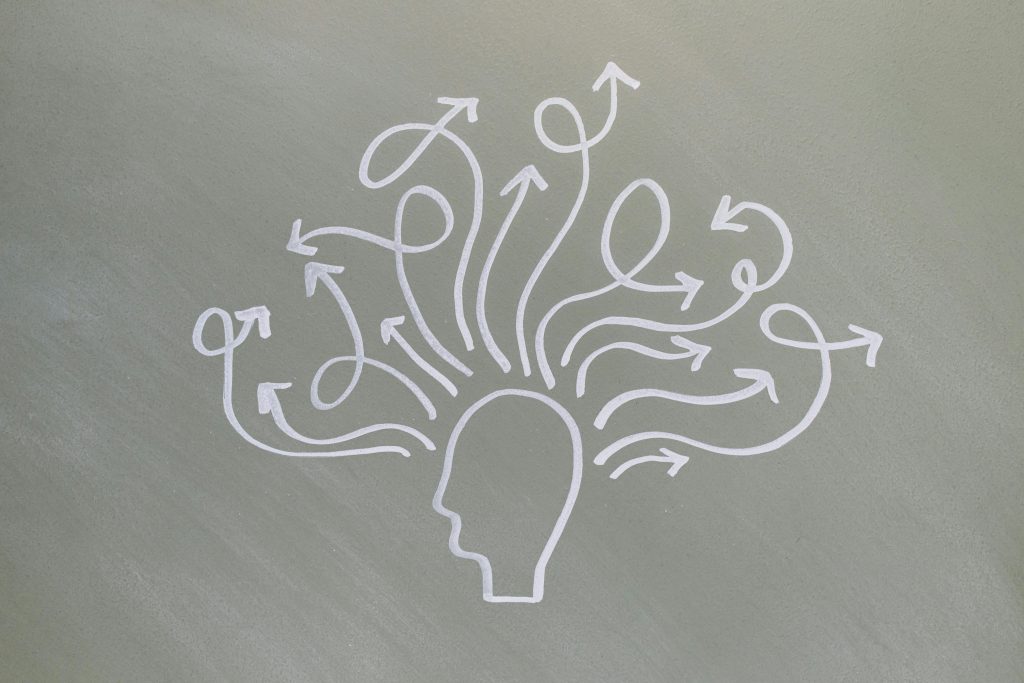In a time marked by constant digital distraction and fast-paced lifestyles, many people are discovering that practicing mindful eating for better health and mental clarity is more than just a wellness trend—it’s a growing necessity. Rising consumer interest, especially among Gen Z and millennials, is reshaping how we view the relationship between food, the brain, and overall well-being

Why Mindful Eating Is Gaining Attention
Mindful eating is not about restrictive diets or food rules. It’s about paying full attention to the experience of eating—savoring the taste, noticing hunger and fullness cues, and being present in the moment. As awareness of mental health and holistic health grows, mindful eating is being adopted by everyone from wellness coaches to therapists as a simple but powerful way to reconnect with the body.
What’s driving this trend?
- Rising rates of stress and anxiety, which often lead to overeating or unhealthy eating patterns.
- An increase in research linking mindful eating to better digestion, reduced binge eating, and improved mood.
- A cultural shift toward slowing down and living more intentionally—especially after the pandemic years.
The Science Behind Mindful Eating and Mental Health
Practicing mindful eating for better health and mental clarity is supported by multiple studies. When we slow down and pay attention while eating, we activate the parasympathetic nervous system—often referred to as “rest and digest.” This has tangible effects:
- Improved digestion: Eating slowly and chewing thoroughly gives the digestive system time to work effectively.
- Reduced emotional eating: A 2014 study published in Appetite found that participants who practiced mindful eating were less likely to eat in response to negative emotions.
- Better portion control: When you’re aware of your hunger and fullness cues, you’re less likely to overeat.
Furthermore, research from Harvard Medical School shows that mindfulness-based approaches to eating can help reduce binge eating and stress eating while also improving self-control.
How Mindful Eating Affects Mental Clarity
Eating mindfully doesn’t just help the body—it clears the mind too. Mental clarity is often clouded by blood sugar spikes, poor digestion, and constant distraction. Mindful eating helps to:
- Stabilize blood sugar by encouraging slower, more deliberate eating.
- Improve focus by reducing the mental noise caused by guilt or stress around food.
- Enhance brain function through improved nutrient absorption and gut-brain balance.
In fact, the gut-brain connection—now a hot topic in neuroscience—reveals that a balanced digestive system can directly impact emotional and cognitive health. As the gut produces about 90% of the body’s serotonin, a mindful approach to food can directly support mood regulation.
Current Trends in Mindful Eating
The practice of mindful eating has entered the mainstream in new ways:
1. Tech-Enabled Mindfulness
Apps like Eat Right Now and Mindful Eating Coach use prompts and tracking tools to help users become more aware of their eating habits. While technology once distracted us from meals, it’s now being used to bring our attention back.
2. Mindful Eating in the Workplace
Companies are introducing mindful lunch breaks or wellness programs that include mindfulness training as a productivity and wellness booster. These programs promote slowing down, chewing thoroughly, and taking screen-free time to eat—fostering both clarity and sustained energy throughout the workday.
3. Nutritionists and Therapists Collaborating
Health professionals now integrate mindfulness into treatment plans for disordered eating or metabolic issues. Instead of focusing purely on calories or macronutrients, there’s a shift toward helping clients explore their relationship with food through awareness and compassion.
A Step-by-Step Guide to Practicing Mindful Eating
Practicing mindful eating for better health and mental clarity doesn’t require any special tools or complex steps. Here’s how to get started:
1. Begin with a Pause
Before you eat, take a moment to notice how you feel. Are you truly hungry, or are you stressed, bored, or distracted? This brief pause helps prevent reactive eating.
2. Create a Calm Eating Environment
Turn off screens. Sit at a table. Remove distractions. Even a few small changes—like eating without your phone—can significantly change the experience.
3. Engage Your Senses
Pay attention to the color, texture, and aroma of your food. As you take each bite, notice how it feels in your mouth. This sensory awareness increases satisfaction and slows down the pace of eating.
4. Chew Thoroughly
Chew each bite 20–30 times. Not only does this improve digestion, but it also gives your brain time to register fullness—usually about 20 minutes into a meal.
5. Check in Mid-Meal
Halfway through, pause and assess how full you feel. Are you still hungry, or are you eating out of habit? This simple check-in can prevent overeating and help build intuitive awareness of your body’s signals.
6. Reflect After Eating
Notice how your body feels after the meal. Are you satisfied, sluggish, still craving something? Over time, these reflections help you better understand what types of food and eating habits support your well-being.
Common Obstacles and How to Overcome Them
It’s easy to forget mindfulness during a chaotic day. Here are a few common challenges—and how to handle them:
- Time pressure: Many people say they don’t have time to eat mindfully. Try starting with just one meal a day. Even five minutes of focused eating is better than none.
- Social meals: Eating with others can make mindfulness difficult. In those moments, focus on slowing down rather than perfect attention. Enjoy the company and the food without rushing.
- Emotional eating: Mindful eating isn’t about perfection. If you find yourself eating due to stress or emotion, acknowledge it without judgment. Curiosity, not control, is key.
Integrating Mindful Eating Into Daily Life
Rather than viewing mindful eating as another task on your wellness checklist, integrate it into moments that already exist:
- Eat your first few bites mindfully at each meal.
- Choose one meal a day to be phone-free.
- Practice gratitude before eating—a simple “thank you” for your food helps shift your focus inward.
- Use grocery shopping and cooking as opportunities for awareness, noticing smells, textures, and preferences.
The Long-Term Impact on Health and Clarity
When consistently practiced, mindful eating can rewire habits and improve your overall relationship with food. Over time, it leads to:
- Balanced energy throughout the day, as blood sugar and digestion are better regulated.
- Reduced cravings, because you’re more attuned to what your body truly needs.
- Mental clarity, as you’re no longer weighed down by bloating, guilt, or food noise.
It’s not about discipline. It’s about noticing. And that noticing builds a foundation for not only better health—but also more clarity, ease, and enjoyment in daily life.
Conclusion
Practicing mindful eating for better health and mental clarity offers a practical, evidence-backed way to transform our relationship with food. From enhancing digestion and emotional resilience to improving focus and mood, the benefits are compelling. In a wellness landscape increasingly driven by personalization and intention, mindful eating has emergent potential as both a lifestyle and performance tool.
References
- Harvard T.H. Chan School of Public Health. (n.d.). The Nutrition Source: Mindful Eating. https://nutritionsource.hsph.harvard.edu/mindful-eating/
- Verywell Mind. (2023). What Is Mindful Eating? https://www.verywellmind.com/what-is-mindful-eating-5207910
- Food Insight. (2023). The Science Behind Mindful Eating. https://foodinsight.org/the-science-behind-mindful-eating/









